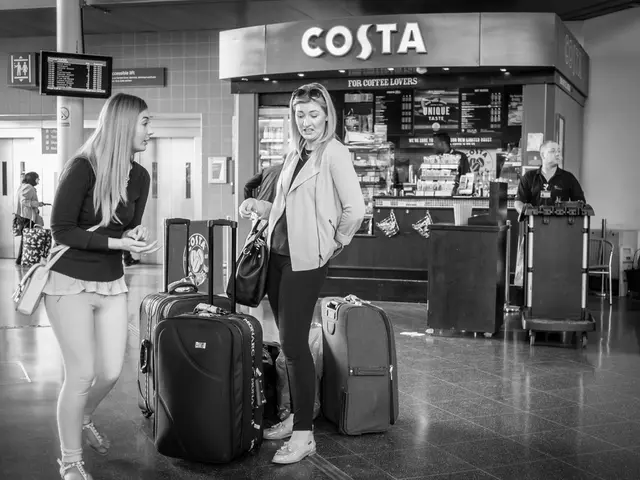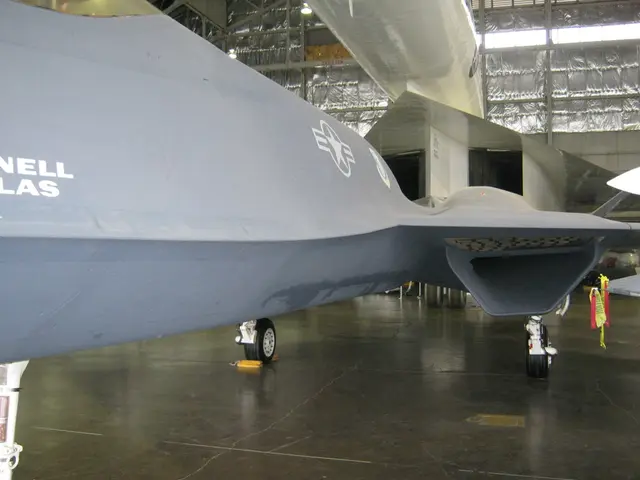Unmanned Lufthansa aircraft soars through skies for ten minutes.
Things Went South on a Lufthansa Flight: 10 Minutes in the Sky without a Pilot
In the unusual incident of February 2024, a Lufthansa flight from Frankfurt to Seville went astray. The captain had a much-needed break, the co-pilot suddenly collapsed, and the crew struggled to regain control of the cockpit for a nerve-wracking ten minutes.
The chaos unfolded when the Airbus A321 was over Spain, en route from Frankfurt. At 10:31 AM, amid the flight, the captain ventured to the lavatory, leaving the co-pilot in the cockpit. "The co-pilot appeared fit and attentive at that time, as per the captain's statement," reported the CIAIAC final report. Unfortunately, this changed just 36 seconds after the captain exited the cockpit. The voice recorder picked up some unsettling noises, and it appears the co-pilot was experiencing a severe seizure.
Alarmed yet unable to reach the co-pilot, the captain made five futile attempts to re-enter the cockpit using the security door code. When this failed, the captain tried an emergency code just before the door would automatically unlock. As luck would have it, that's when the co-pilot regained consciousness and opened the door manually.
A Miraculous Escape
The crew immediately noticed the co-pilot's state — profusely sweating and displaying erratic movements. Realizing the gravity of the situation, the captain made a fast decision to divert the flight to Madrid for an emergency landing. In the meantime, a passenger doctor and the cabin crew sprang into action to assist the disoriented co-pilot.
Investigations revealed it was a seizure-like episode, a symptom of an undetected neurological disease. The CIAIAC noted the crew's swift and efficient response.
Time to Reevaluate
This event has revived the debate regarding cockpit safety protocols. The current rule mandates that the flight deck is always staffed by at least two crew members to prevent isolation of a single pilot. Despite such regulations, this Lufthansa incident highlighted the need for stricter adherence and robust monitoring measures to maintain a two-person cockpit presence at all times.
In response to similar instances, like the Germanwings crash in the French Alps in March 2015, aviation authorities had already emphasized the need for at least two people in the cockpit. However, these recommendations were revised in 2016, allowing airlines to assess individual risk factors and adjust their own procedures.
Now, it appears that a review and reinforcement of recommendations for cockpit access and incapacitation response protocols will be reconsidered in light of this Lufthansa incident. No regulatory changes have been announced officially yet, but it's expected that aviation authorities and Lufthansa will issue recommendations or enforce stronger rules to guarantee continuous two-person cockpit presence and enhanced monitoring for potential pilot incapacitations.
- Aircraft
- Lufthansa
- Pilots
Sources: ntv.de, spl
- Flight Attendants
- Cabin Crew
- Emergency Procedures
Enrichment Data:
The typical fly-by-wire cockpit setup dictates that the flight deck must always have at least two crew members, usually a pilot and a flight attendant or another pilot, to ensure proper oversight if a single pilot becomes incapacitated. However, this incident exposed that such practices were not consistently applied. In this unusual incident, one pilot was left all alone in the cockpit for approximately ten minutes.
While the lone pilot inadvertently operated the controls during the incapacitation period, the autopilot was not disengaged during this time, which prevented a catastrophe. Nevertheless, this incident has raised concerns about cockpit safety protocols and the need for enhanced monitoring and training to maintain continuous two-person cockpit presence. The event ultimately reminds us of previous crises like the Germanwings tragedy, where stringent cockpit door policies and the requirement of two personnel were implemented to curb isolation of a pilot. Despite regulations, the Lufthansa incident demonstrates the necessity for strengthened enforcement and operational compliance to prevent similar incidents in the future.
- The unusual incident involving a Lufthansa flight highlighted the importance of adhering to cockpit safety protocols, including the necessity for a two-person cockpit presence and enhanced monitoring to prevent situations where a single pilot becomes incapacitated.
- Aviation authorities may reconsider and reinforce recommendations for cockpit access and incapacitation response protocols, aiming to avoid incidents like the Lufthansa flight, where one pilot was left all alone in the cockpit for approximately ten minutes. This revision could lead to new rules or recommendations, as well as stronger enforcement to guarantee a continuous two-person cockpit presence and improved monitoring for potential pilot incapacitations.








